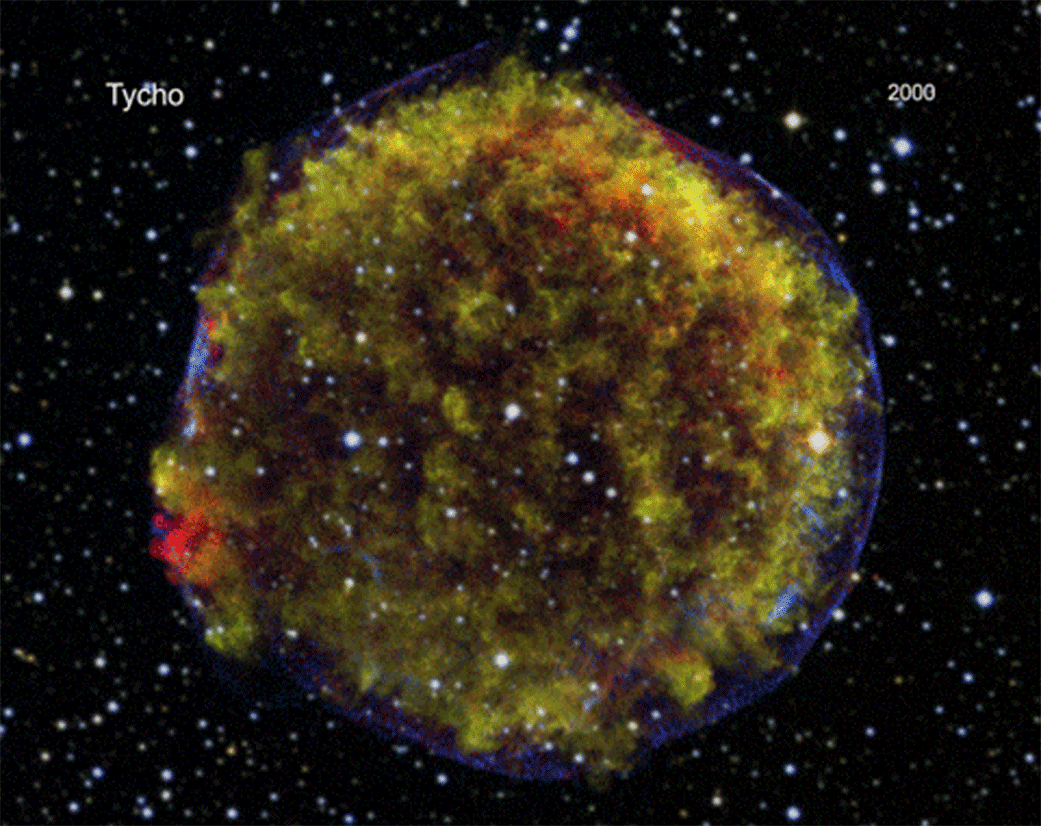When we look up at the stars or see stunning photographs of nebulae, they are snapshots in time. But a new movie from NASA is showing how stellar gases have been moving through space over the past 15 years.

In 1572, a bright star lit up the sky, so bright that it could even be seen during the day. Danish astronomer Tycho Brahe would later write a book on the phenomenon, a supernova explosion.
READ MORE: Deja-vu? Astronomers see same supernova 4 times
When a large star reaches the end of its life, it exhausts its nuclear fuel, collapses and then explodes.
Another type of supernova occurs in a binary star system where a white dwarf star steals matter from the second star, accumulates too much material and explodes. This is what astronomers believed caused the supernova in 1572.
That supernova ejected material that has been heated by resulting shock waves. Using data from NASA’s Chandra X-ray Observatory from 200o to 2015, NASA has created the longest movie of the expanding gases, which is now called the Tycho supernova remnant.
READ MORE: New space telescope will allow Canadian astronomers to study black holes, supernovas
Astronomers have been measuring the speed of the shockwave and found that, though it looks relatively circular, different parts are moving at different speeds. They calculated the top speed at roughly 19,000 km/h.
These types of supernovas, called Type Ia, help astronomers track the expansion of the universe.


Comments